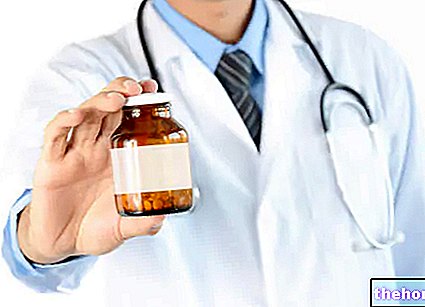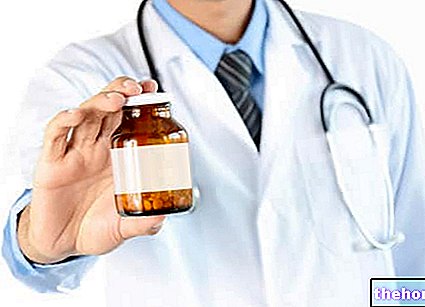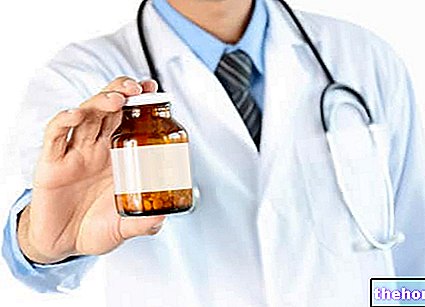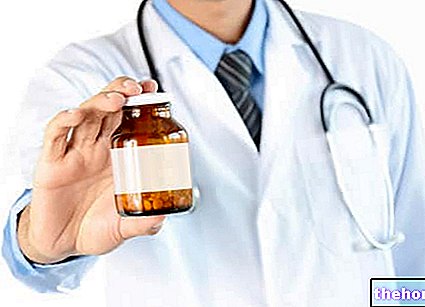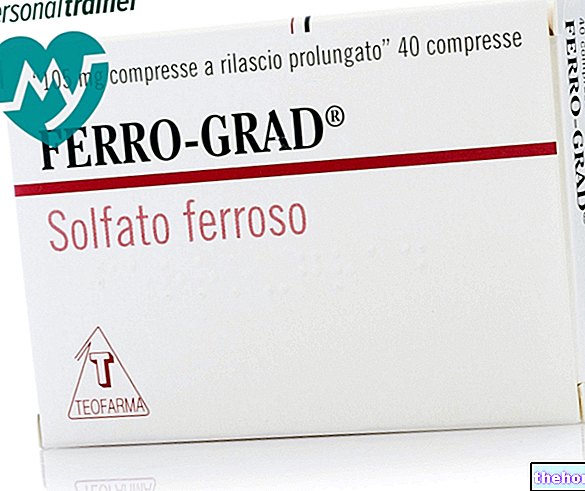Active ingredients: Multi-vitamin
Supradyn coated tablets
Supradyn package inserts are available for pack sizes:- Supradyn coated tablets
- Supradyn effervescent tablets
Indications Why is Supradyn used? What is it for?
Supradyn belongs to the category of mineral-associated polyvitamins. This medicine is used in primary multivitamin deficiencies (caused by insufficient intake of vitamins through food) and secondary (caused by diseases that prevent the body from using the vitamins correctly).
Contraindications When Supradyn should not be used
Do not take Supradyn
- if you are allergic to the active substances or any of the other ingredients of this medicine (listed in section 6);
- if you have iron and / or copper metabolism disorders;
- if you suffer from hypervitaminosis A (a condition caused by excessive vitamin intake
- if you suffer from hypervitaminosis D (a condition caused by excessive vitamin intake
- if you suffer from hypercalcaemia (high concentration of calcium in the blood);
- if you suffer from marked hypercalciuria (high levels of calcium in the urine);
- if you suffer from impaired kidney function.
Precautions for use What you need to know before taking Supradyn
Warnings and Precautions
Talk to your doctor or pharmacist before taking Supradyn.
When it can be used only after consulting your doctor
- if you are taking levodopa medicines (a medicine used to treat Parkinson's disease) (see "Other medicines and Supradyn"):
- if you are taking other mono- or multivitamin preparations or any other medicines or if you are under medical treatment, particularly if you are taking vitamin K antagonists and / or other anticoagulant therapies (which prevent blood clotting) (see "Other medicines and Supradyn" ).
Interactions Which drugs or foods can modify the effect of Supradyn
Tell your doctor or pharmacist if you are taking, have recently taken or might take any other medicines.
Talk to your doctor especially if you are taking:
- levodopa, as vitamin B6 hinders the therapeutic action of levodopa (a medicine used for the treatment of Parkinson's disease);
- anticoagulants or medicines that affect platelet aggregation.
Warnings It is important to know that:
Pregnancy and breastfeeding
If you are pregnant or breast-feeding, think you may be pregnant or are planning to have a baby, ask your doctor or pharmacist for advice before taking this medicine.
During pregnancy, care must be taken not to exceed the daily requirement of vitamin. A recommended (6000-7000 IU). For this reason, you should not take Supradyn together with other medicines containing vitamin A, the synthetic isomers isotretinoin and etretinate (medicines derived from Vitamin A), or beta-carotene (a substance that is transformed in the body into Vitamin A), as high doses of these compounds are harmful to the fetus.
A chronic overdose of vitamin D could be harmful to the fetus and newborn baby. During breastfeeding, it is important to take this into account when the infant takes preparations containing this vitamin.
Driving and using machines
Supradyn does not affect the ability to drive or use machines.
Supradyn contains sucrose and lactose
This medicinal product contains sucrose and lactose. If you have been told by your doctor that you have "intolerance to some sugars, contact your doctor before taking this medicinal product.
Dose, Method and Time of Administration How to use Supradyn: Posology
Always take this medicine exactly as described in this leaflet or as directed by your doctor or pharmacist. If in doubt, consult your doctor or pharmacist.
The recommended dose is one coated tablet per day.
The coated tablets should be swallowed whole.
Overdose What to do if you have taken an overdose of Supradyn
There are currently no known pathological manifestations resulting from overdose when Supradyn is used according to the instructions given in this leaflet.
Almost all overdose reports concern cases of concomitant intake of high-dose mono- or multivitamin preparations. In case of use of excessive doses and / or for prolonged periods, phenomena of hypervitaminosis A and D may occur (excess of vitamins A and D in the body clinically characterized by tiredness, nausea, vomiting, dry skin, itching and osteoarticular pain) and hypercalcemia (high concentration of calcium in the blood), as well as iron and copper intoxication.
If you have any further questions on the use of this medicine, ask your doctor or pharmacist.
Side Effects What are the side effects of Supradyn
Like all medicines, this medicine can cause side effects, although not everybody gets them.
Rare side effects (may affect up to 1 in 1,000 people): gastrointestinal symptoms, such as abdominal pain, constipation, vomiting, diarrhea and nausea.
Very rare side effects (may affect up to 1 in 10,000 people): hypersensitivity reactions, symptoms of which may consist of hives, swelling of the face, breathlessness, redness or rash, blistering and shock. If you experience these symptoms, stop treatment and consult a doctor.
You may see a yellowish discoloration of the urine. This effect has no pathological significance and is due to the vitamin B2 contained in the preparation.
Reporting of side effects
If you get any side effects, talk to your doctor or pharmacist. This includes any possible side effects not listed in this leaflet. You can also report side effects directly via the national reporting system, http://www.agenziafarmaco.gov.it/it/responsabili. By reporting side effects you can help provide more information on the safety of this medicine.
Expiry and Retention
Keep this medicine out of the sight and reach of children.
Do not store above 30 ° C.
Store in the original packaging.
Do not use this medicine after the expiry date which is stated on the package. The expiry date refers to the last day of that month.
Do not throw any medicines via wastewater or household waste. Ask your pharmacist how to throw away medicines you no longer use. This will help protect the environment.
Composition and pharmaceutical form
What Supradyn contains
- The active ingredients are: vitamin A (as Vit. A palmitate type 250 CWS) 3.333 IU, thiamine nitrate (Vit. B1) 20 mg, riboflavin (Vit. B2) 5 mg, pyridoxine hydrochloride (Vit. B6) 10 mg, nicotinamide (Vit. PP) 50 mg, calcium pantothenate 11.6 mg, biotin (Vit. H) 1.8 mg, cyanocobalamin (Vit. B12) 5 μg, ascorbic acid (Vit. C) 150 mg, cholecalciferol (as vit. D3 type 100 CWS) 400 IU, α-tocopherol acetate (as Vit. E 50% type SD) 10 mg, calcium (as calcium phosphate and calcium pantothenate) 51 mg, magnesium (as light magnesium oxide and magnesium stearate) 18.5 mg, phosphorus (as calcium phosphate) 23.8 mg, iron (as ferrous sulfate) 10 mg, manganese (as manganese sulfate monohydrate) 0.5 mg, copper (as anhydrous copper sulfate) 1.0 mg, molybdenum (as sodium molybdate dihydrate) 0.1 mg, zinc (as zinc sulphate monohydrate) 0.5 mg.
- The other ingredients are: crospovidone, povidone K90, lactose monohydrate, microcrystalline cellulose, mannitol, magnesium stearate, rice starch, talc, titanium dioxide (E171), dried nebulized gum arabic, canthaxanthin 10% CWS / S (E161), solid paraffin , light liquid paraffin, sucrose.
What Supradyn looks like and contents of the pack
Supradyn is available in packs of 10, 30 or 60 coated tablets.
Source Package Leaflet: AIFA (Italian Medicines Agency). Content published in January 2016. The information present may not be up-to-date.
To have access to the most up-to-date version, it is advisable to access the AIFA (Italian Medicines Agency) website. Disclaimer and useful information.
01.0 NAME OF THE MEDICINAL PRODUCT
SUPRADYN
02.0 QUALITATIVE AND QUANTITATIVE COMPOSITION
Supradyn coated tablets . One coated tablet contains: vitamin A (as Vit. A palmitate type 250 CWS) 3,333 IU, thiamine nitrate (Vit. B1) 20 mg, riboflavin (Vit. B2) 5 mg, pyridoxine hydrochloride (Vit. B6) 10 mg, nicotinamide (Vit. PP) 50 mg, calcium pantothenate 11.6 mg, biotin (Vit. H) 1.8 mg, cyanocobalamin (Vit. B12) 5 mcg, ascorbic acid (Vit. C) 150 mg, cholecalciferol (as vit. D3 type 100 CWS) 400 IU, a-tocopherol acetate (as Vit. E 50% type SD) 10 mg, calcium (as calcium phosphate and calcium pantothenate) 51 mg, magnesium (as light magnesium oxide and magnesium stearate) 18.5 mg, phosphorus (as calcium phosphate) 23.8 mg, iron (as ferrous sulfate) 10 mg, manganese (as manganese sulfate monohydrate) 0.5 mg, copper (as anhydrous copper sulfate) 1.0 mg, molybdenum (as sodium molybdate dihydrate) 0.1 mg, zinc (as zinc sulphate monohydrate) 0.5 mg.
Supradyn effervescent tablets . An effervescent tablet contains: vitamin A (as vitamin A palmitate type 100 WS) 3,333 I.U .; thiamine mononitrate (Vit. B1) 20 mg; riboflavin (Vit. B2, as riboflavin sodium phosphate) 5 mg; nicotinamide (Vit. PP) 50 mg; pyridoxine hydrochloride (Vit. B6) 10 mg; calcium pantothenate 11.6 mg; biotin (Vit. H) 2.3 mg; cyanocobalamin (Vit. B12, as cyanocobalamin 0.1% WS) 5 mcg; ascorbic acid (Vit. C) 150 mg; cholecalciferol (as vitamin D3 type 100 CWS) 400 I.U .; d, 1-a tocopheryl acetate (Vit. E) 10 mg; calcium (as calcium glycerophosphate and calcium pantothenate) 51 mg; phosphorus (as calcium glycerophosphate and magnesium glycerophosphate) 45 mg, iron (as iron carbonate saccharate) 1.25 mg; magnesium (as magnesium glycerophosphate) 5 mg; manganese (as manganese sulfate monohydrate) 0.5 mg; copper (as anhydrous copper sulfate) 0.1 mg; zinc (as zinc sulfate monohydrate) 0.5 mg; molybdenum (as sodium molybdate dihydrate) 0.1 mg.
For the full list of excipients, see section 6.1.
03.0 PHARMACEUTICAL FORM
Coated tablet
Effervescent tablet
04.0 CLINICAL INFORMATION
04.1 Therapeutic indications
Primary and secondary multivitamin deficiency states.
04.2 Posology and method of administration
One coated tablet or one effervescent tablet per day.
The coated tablets should be swallowed whole.
The effervescent tablets are dissolved in a glass of water.
04.3 Contraindications
Hypersensitivity to any of the active substances or excipients.
Disorders of iron and / or copper metabolism.
States of hypervitaminosis A.
States of hypervitaminosis D.
Hypercalcemia.
Marked hypercalciuria.
Impaired renal function.
04.4 Special warnings and appropriate precautions for use
Do not exceed the recommended dose. Very high doses of some components, in particular vitamin A, vitamin D, iron and copper, can be harmful to health.
Patients taking other mono- or multivitamin preparations or any other medicines or who are under medical treatment, especially patients taking vitamin K antagonists and / or other anticoagulant therapies, should consult their doctor or pharmacist before taking this medicine. .
The effervescent tablets contain approximately 300 mg of sodium (corresponding to approximately 760 mg of table salt).
Those who follow a low-sodium regimen will therefore prefer to resort to coated tablets rather than effervescent tablets.
The effervescent tablets contain about 1200 mg of sucrose; the coated tablets contain approximately 400 mg of sucrose. Patients with rare hereditary forms of fructose intolerance, glucose-galactose malabsorption syndrome or sucrase-isomaltase deficiency should not take this medicine.
The coated tablets contain 5.65 mg of lactose. Patients with rare hereditary forms of galactose intolerance, lactase deficiency or glucose-galactose malabsorption syndrome should not take this medicine.
04.5 Interactions with other medicinal products and other forms of interaction
Numerous potential interactions are reported in the literature for the individual components.
Vitamin B6 antagonizes the activity of levodopa if the latter is not administered in combination with decarboxylase inhibitors.
Medicines containing vitamin E such as Supradyn should be used with caution in patients receiving anticoagulants or medicines that affect platelet aggregation.
Therefore, patients taking other medicines or under medical treatment should consult their doctor or pharmacist before taking this medicine.
04.6 Pregnancy and lactation
During pregnancy and breastfeeding, you should consult your doctor before taking this medicine.
In particular, during pregnancy the daily requirement of vitamin must not be exceeded. A recommended (6,000-7,000 IU). Doses above 10,000 IU / day in the first trimester of pregnancy have been shown to be teratogenic. Therefore, Supradyn should not be taken together with other medicines containing vitamin A, the synthetic isomers isotretinoin and etretinate, or beta-carotene, as high doses of these compounds are harmful to the fetus. A chronic overdose of vitamin D could be harmful to the fetus and newborn baby. During breastfeeding, it is important to take this into account when the infant takes preparations containing this vitamin.
04.7 Effects on ability to drive and use machines
Supradyn does not affect the ability to drive or use machines.
04.8 Undesirable effects
Gastrointestinal symptoms such as abdominal pain, constipation, vomiting, diarrhea and nausea may occur rarely.
In very rare cases, hypersensitivity reactions may occur. Symptoms can consist of hives, swelling of the face, wheezing, redness or rash, blistering, and shock. In the event of a hypersensitivity reaction, discontinue treatment and consult a doctor.
A yellowish discoloration of the urine may be observed. This effect has no pathological significance and is due to the vitamin B2 contained in the preparation.
04.9 Overdose
To date, no pathological manifestations resulting from overdose are known.
Almost all overdose reports concern cases of concomitant intake of high-dose mono- or multivitamin preparations. In case of use of excessive doses and / or for prolonged periods, phenomena of hypervitaminosis A and D and hypercalcemia may occur, as well as martial and copper intoxication.
Nonspecific initial symptoms, such as sudden onset of headache, confusion, and gastrointestinal disturbances (e.g. constipation, nausea and vomiting), may be indicative of acute overdose. If these symptoms occur, stop treatment and consult a doctor.
05.0 PHARMACOLOGICAL PROPERTIES
05.1 Pharmacodynamic properties
Pharmacotherapeutic group: Mineral-associated polyvitamins, ATC code: A11AA03
Supradyn is a multivitamin / multimineral preparation that contains 11 vitamins and 8 minerals and trace elements.
Vitamins are essential nutrients. They are essential for the metabolism of energy, carbohydrates, lipids, nucleic acids and proteins, as well as for the synthesis of amino acids, collagen, neurotransmitters, etc.
Vitamins, as well as in fundamental metabolic reactions, are involved in the regulation and coordination of metabolic processes. They are essential eg. for bone growth, wound healing, maintenance of vascular integrity, microsomal drug metabolism and detoxification, immune function, development and differentiation.
Minerals and trace elements are also essential nutrients. They have different functions, as catalysts of numerous enzymatic reactions, structural components of enzymes, hormones, neuropeptides and hormone receptors, and are involved for example. in metabolism, in nerve transmission, in the structure of bones and teeth.
05.2 Pharmacokinetic properties
Vitamin A: intestinal absorption is total, but, as for all fat-soluble vitamins, it requires the presence of bile. Vitamin A is stored in the liver where it builds up large reserves, sufficient to cover normal needs for a long period of time . Vitamin A circulates in the blood bound to a specific protein, the retinol-binding protein (RBP), synthesized in the liver. In the organism, retinol, at least in part, is conjugated with glucuronic acid and participates in an enterohepatic circulation, in which it is oxidized to retinal and retinoic acid. Oxoretinoic acid is another identified metabolite. Under normal conditions, vitamin A is never found in the urine in unchanged form, but always as a metabolite.
Vitamin B1 : absorption in the intestine occurs by sodium-dependent active transport and by passive diffusion. Thiamine is then stored in the tissues until saturation and then excreted in the urine as pyrimidine derivative or in unchanged form.
Vitamin B2 : it is phosphorylated in the intestine during absorption and transported to the tissues until saturation. It is eliminated almost exclusively via the urine.
Vitamin B6 : is easily absorbed in the intestine. In the liver, 4-pyridoxic acid is formed, which is the main excretion product. It derives from the action of hepatic aldehyde-oxidase on pyridoxal, a substance into which pyridoxine is transformed in the organism.
Vitamin B12 : administered orally, cyanocobalamin is absorbed partly by simple diffusion through the intestinal mucosa, partly after binding to intrinsic factor, a glycoprotein with a molecular weight of 60,000. The complex vitamin B12 - intrinsic factor interacts with specific receptors of the ileum mucosa, determining the passage of the vitamin principle into the circulation. Vitamin B12 then binds to plasma globulins, the transcobalamins, to be transported in the tissues and in particular to the liver . Excretion occurs in small quantities through the bile and mainly by the kidney.
Vitamin PP: intestinal absorption is normally very efficient. In the organism it is converted into coenzymes and excreted mainly in the form of methylated derivatives.
C vitamin: easily absorbed in the intestinal tract, it is present in all fluids and tissues of the body. The elimination is mainly urinary.
Vitamin D3 : Vitamin D is absorbed in the intestinal tract together with lipids in the presence of bile salts and can be deposited in the liver, although there are usually no reserves. However, there is an important endogenous synthesis in the skin, in the presence of U.V. The excretion takes place with the faeces and, to a small extent, with the urine.
Vitamin E: intestinal absorption is good but not total, so a part of the amount administered is found in the faeces. The vitamin circulates in the plasma, mostly bound to β-lipoproteins. It is found in all tissues and in particular in the liver. Among its metabolites, glucuronidated compounds of tocopherolic acid and its gammalactone have been identified. Elimination occurs via the biliary and urinary tract.
Vitamin H: easily absorbed in the small intestine, it is present in all cells. It is eliminated mainly in the urine.
Calcium, phosphorus and iron: they are absorbed in the small intestine through a transport facilitated with specific carriers. In particular, for calcium and phosphorus absorption is dependent on the presence of vitamin D.
Magnesium, manganese, copper, zinc and molybdenum: they are absorbed in the gastrointestinal tract by passive diffusion, in the form of complexes with organic ions.
05.3 Preclinical safety data
There are no specific studies with Supradyn but the preclinical safety of the individual components is well documented.
06.0 PHARMACEUTICAL INFORMATION
06.1 Excipients
Supradyn coated tablets
crospovidone, povidone K90, lactose monohydrate, microcrystalline cellulose, mannitol, magnesium stearate, rice starch, talc, titanium dioxide (E171), dried gum arabic spray, canthaxanthin 10% CWS / S (E161), solid paraffin, light liquid paraffin, sucrose.
Supradyn effervescent tablets
tartaric acid, sodium bicarbonate, saccharin, natural lemon flavor, mannitol, sucrose.
06.2 Incompatibility
Not relevant.
06.3 Period of validity
2 years.
06.4 Special precautions for storage
Do not store above 25 ° C.
Keep the product in the original packaging.
06.5 Nature of the immediate packaging and contents of the package
Supradyn coated tablets
Primary container: PVC / PVDC-Aluminum coupled blister
Supradyn effervescent tablets
Primary container: the tablets are all wrapped together in a paper / aluminum foil, with aluminum foil on the outside, and are contained in a polypropylene tube with a white low density polyethylene (LPDE) pressure cap with desiccant integrated.
Not all pack sizes may be marketed.
06.6 Instructions for use and handling
No special instructions.
07.0 MARKETING AUTHORIZATION HOLDER
Bayer S.p.A. Viale Certosa 130, 20156 Milan
08.0 MARKETING AUTHORIZATION NUMBER
"Coated tablets" 10 tablets AIC n ° 018622074
"Coated tablets" 30 tablets AIC n ° 018622086
"Coated tablets" 60 tablets AIC n ° 018622136
"Effervescent tablets" 10 tablets AIC n ° 018622098
"Effervescent tablets" 20 tablets AIC n ° 018622148
"Effervescent tablets" 30 tablets AIC n ° 018622151
"Effervescent tablets" 15 tablets AIC n ° 018622175
09.0 DATE OF FIRST AUTHORIZATION OR RENEWAL OF THE AUTHORIZATION
Renewal: June 2010
10.0 DATE OF REVISION OF THE TEXT
Determination of October 2011

